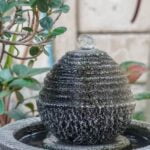Feng shui house designs have become increasingly popular in recent years as people seek to create balanced and harmonious living spaces. This ancient Chinese practice focuses on the arrangement of elements in a space to promote positive energy flow and overall well-being. In this article, we will delve into the basics of feng shui house designs, exploring its history, importance, key elements, practical tips, case studies, common mistakes to avoid, and the option of hiring a feng shui consultant.
The practice of feng shui dates back thousands of years and has deeply influenced traditional Chinese architecture and design. By understanding the principles of feng shui, homeowners can create a space that not only looks aesthetically pleasing but also promotes a sense of balance and harmony. Elements such as layout, colors, and materials play a crucial role in achieving optimal feng shui in a home.
Creating a harmonious home environment through feng shui involves much more than just rearranging furniture or choosing calming color palettes. It requires a deeper understanding of how energy flows through a space and how to enhance that flow to promote positivity and well-being. By incorporating feng shui principles into your house design, you can create a sanctuary that nurtures both body and soul.
History of Feng Shui and Its Influence on House Design
The history of Feng Shui dates back thousands of years, originating in ancient China. The practice of Feng Shui is deeply rooted in Chinese culture and philosophy, with its principles focusing on creating harmony and balance between individuals and their surrounding environment. Feng Shui is not just about decorating a space; it is a complex system that takes into account the energy flow or “qi” within a space and how it affects the inhabitants.
Influence of Feng Shui on house design can be seen in traditional Chinese architecture, where buildings were constructed according to Feng Shui principles to maximize positive energy flow. The layout, orientation, and even the materials used in building construction were carefully chosen to ensure good fortune and wellbeing for the occupants.
This influence has extended beyond China, as many modern architects and interior designers around the world now incorporate Feng Shui principles into their designs to create spaces that are not only aesthetically pleasing but also energetically balanced.
Today, understanding the history and influence of Feng Shui on house design can provide valuable insights for homeowners looking to create a harmonious living space. By incorporating key elements such as proper layout, strategic use of colors, and selection of auspicious materials, individuals can enhance the energy flow within their homes.
Whether you choose to fully embrace traditional Feng Shui practices or simply integrate some basic concepts into your design, creating a balanced environment through Feng Shui house designs can have a positive impact on your overall well-being.
| Key Points | Details |
|---|---|
| Origin | Originated in ancient China thousands of years ago |
| Influence | Deeply rooted in Chinese culture and philosophy, impacting architecture worldwide |
| Modern Application | Many architects and designers incorporate Feng Shui principles for balanced spaces |
Importance of Feng Shui in Creating a Harmonious Home Environment
Feng Shui, an ancient Chinese practice that focuses on harmonizing individuals with their surroundings, plays a crucial role in creating a harmonious home environment. By incorporating principles of Feng Shui into the design and layout of your home, you can enhance the flow of positive energy, or Chi, throughout your living space. This holistic approach not only improves the aesthetics of your home but also promotes overall well-being and prosperity.
Benefits of Harmonious Home Environment
A harmonious home environment is essential for maintaining a sense of peace and balance in your daily life. When your living space is well-organized and free from clutter, it allows for the smooth flow of energy, which can positively impact your physical health, mental well-being, and relationships with others. By following the principles of Feng Shui house designs, you can create an atmosphere that supports relaxation, creativity, and productivity.
Incorporating Feng Shui Into Your Home Design
To create a harmonious home environment through Feng Shui house designs, consider factors such as the layout of your furniture, the use of colors and materials, and the placement of decorative objects. Positioning your furniture to allow for easy movement and clear pathways can facilitate the flow of Chi throughout your home.
Choosing colors that correspond to different elements in Feng Shui (such as water, wood, fire, earth, and metal) can evoke specific energies in each room. Additionally, selecting natural materials like wood or bamboo can help create a sense of warmth and grounding in your living space.
Key Elements of Feng Shui House Designs
Achieving harmony and balance in your home through feng shui house designs involves paying close attention to key elements such as layout, colors, and materials. By incorporating these essential components, you can create a space that promotes positive energy flow and overall well-being for you and your family. Here are some important considerations to keep in mind when designing your home using feng shui principles:
- Layout: The layout of your home plays a crucial role in feng shui design. It is important to ensure that the flow of energy, or chi, moves freely throughout the space. To achieve this, consider the placement of furniture, the arrangement of rooms, and the overall structure of the house. Avoid clutter and obstacles that may disrupt the natural flow of energy.
- Colors: Colors have a significant impact on the energy of a space according to feng shui principles. Each color corresponds to one of the five elements-wood, fire, earth, metal, and water-that need to be balanced for harmonious energy flow. For example, earth tones like beige and brown promote stability and nourishment, while blues and greens represent tranquility and growth. Choose colors that resonate with the energy you want to cultivate in each room.
- Materials: The materials used in your home can also influence its feng shui design. Opt for natural materials like wood, stone, or bamboo to create a sense of grounding and connection with nature. Avoid synthetic materials or harsh textures that may disrupt the flow of energy in your living space. Incorporating elements like crystals or mirrors can also enhance positive vibes and reflect light throughout your home.
By carefully considering these key elements of feng shui house designs-layout, colors, and materials-you can create a harmonious environment that supports physical health, emotional well-being, and spiritual growth. Whether you are renovating an existing space or building a new home from scratch, integrating these feng shui principles can help you achieve a more balanced and peaceful living environment for yourself and your loved ones.
Practical Tips for Incorporating Feng Shui Into Your Home Design
When incorporating feng shui into your home design, there are several practical tips that can help you create a more harmonious and balanced space. One key aspect to consider is the layout of your home. In feng shui house designs, it is important to allow for a smooth flow of energy, also known as chi, throughout the space. This can be achieved by ensuring that furniture placement allows for easy movement and clear pathways.
Choosing Colors Wisely
Another important consideration in feng shui house designs is the use of color. Different colors have different energies associated with them in feng shui practice. For example, warm colors like red and orange are believed to be energizing and stimulating, while cool colors like blue and green are thought to be calming and relaxing. When selecting colors for your home, consider the desired mood for each room and choose shades that support it.
Selecting Materials Mindfully
The materials used in your home design can also have an impact on the overall feng shui of the space. Natural materials such as wood, stone, and bamboo are often favored in feng shui house designs because they are believed to promote a sense of connection with nature and bring positive energy into the home. Avoid using artificial or synthetic materials whenever possible, as they may disrupt the flow of chi in your living environment.
By paying attention to these practical tips for incorporating feng shui into your home design, you can create a space that not only looks beautiful but also feels balanced and harmonious. Remember that feng shui is about more than just aesthetics; it is about creating a supportive environment that nurtures both body and soul. Incorporating these principles into your house design can help you cultivate a sense of well-being and positivity in your everyday life.
Case Studies
Feng shui house designs have gained popularity around the world for their ability to create a harmonious and balanced living environment. From traditional Chinese homes to modern apartments in bustling cities, the principles of feng shui can be applied to any type of dwelling. Let’s explore some successful case studies of feng shui house designs from different cultures and regions:
- In China, traditional courtyard houses often incorporate feng shui principles in their layout and construction. The central courtyard is designed to allow for the flow of positive energy, or chi, throughout the home. The placement of doors, windows, and furniture are carefully considered to enhance the overall balance and harmony of the space.
- In Japan, modern homes are being designed with feng shui in mind to promote tranquility and well-being. Minimalist interiors with natural materials like wood and stone create a sense of calmness and connection to nature. Floor-to-ceiling windows allow for ample natural light to enter the space, encouraging positive energy flow.
- In the United States, many homeowners are incorporating feng shui elements into their house designs to improve health, wealth, and relationships. By arranging furniture in specific ways, using soothing colors like blue or green, and incorporating plants for added freshness, American homes are embracing the principles of feng shui for a more peaceful living environment.
These case studies demonstrate that feng shui house designs can be adapted to different cultural contexts and architectural styles while still achieving positive results in terms of creating a harmonious living space. Whether you live in a traditional Asian home or a contemporary Western apartment, incorporating feng shui principles can help you design a home that not only looks beautiful but also feels energetically balanced and supportive.
Common Mistakes to Avoid When Implementing Feng Shui in Your Home
When it comes to creating a harmonious home environment with Feng Shui house designs, there are certain common mistakes that homeowners should be aware of in order to ensure the effectiveness of their design choices. One of the most common mistakes is neglecting the importance of clutter in the home.
Clutter not only disrupts the flow of energy, or chi, but it also hinders productivity and creates a sense of chaos in the space. It is essential to declutter regularly and keep your living spaces organized to allow positive energy to flow freely throughout your home.
Another common mistake when implementing Feng Shui in your home is ignoring the significance of proper lighting. Natural light is vital in Feng Shui as it brings warmth and positivity into a space. Dimly lit rooms can create feelings of stagnation and lackluster energy. To remedy this, try to maximize natural light sources in your home by keeping windows free from obstructions and using mirrors strategically to reflect light into darker areas.
Lastly, overlooking the importance of incorporating all five elements – wood, fire, earth, metal, and water – into your home design is a common mistake made when applying Feng Shui principles. Each element corresponds to different aspects of life and contributes to a balanced energy flow within a space.
By including these elements through decor items, furniture pieces, or color schemes, you can create a more harmonious atmosphere that promotes well-being and positivity in your home. By avoiding these common mistakes and paying attention to details such as clutter management, lighting choices, and elemental balance, you can enhance the efficacy of your Feng Shui house design for a truly balanced living environment filled with positive energy flow.
Hiring a Feng Shui Consultant
Have you been contemplating incorporating feng shui principles into your house design project? One question that may arise is whether it is necessary to hire a feng shui consultant for guidance. While it is possible to study and implement feng shui practices on your own, consulting with a professional can provide invaluable expertise and insight into creating a harmonious living space.
Feng shui consultants are trained individuals who specialize in the art of creating balanced environments through the arrangement of spaces, colors, and elements. They can offer personalized recommendations based on your specific needs and goals, ensuring that the feng shui house design aligns with your intentions for the space. From selecting the appropriate layout to choosing colors that promote positive energy flow, a consultant can guide you through each step of the process.
Moreover, hiring a feng shui consultant can save you time and effort by streamlining the decision-making process. With their expertise, they can help you avoid common mistakes and optimize the design of your home according to feng shui principles. While it may be an additional investment upfront, the long-term benefits of creating a harmonious and supportive environment cannot be understated.
| Benefits of Hiring a Feng Shui Consultant | Considerations When Hiring a Feng Shui Consultant |
|---|---|
| Personalized recommendations tailored to your needs and goals | Check credentials and experience to ensure expertise |
| Saves time by streamlining decision-making process | Discuss budget and scope of services upfront |
| Avoids common mistakes in implementing feng shui principles | Get references or testimonials from previous clients |
Conclusion
In conclusion, embracing the principles of Feng Shui house designs can significantly impact the energy flow and overall harmony within your home. By understanding the basics of Feng Shui and its historical influence on house design, you can create a space that promotes positivity and wellbeing for you and your family. From the layout to colors and materials used, each element plays a crucial role in enhancing the flow of energy in your living environment.
Practical tips for incorporating Feng Shui into your home design include decluttering to allow energy to flow freely, using calming colors like blues and greens, and incorporating natural elements such as wood or plants. By aligning these elements with the principles of Feng Shui, you can create a space that not only looks visually appealing but also promotes a sense of peace and balance.
While hiring a Feng Shui consultant may not be necessary for all house design projects, seeking professional advice can provide valuable insights and guidance on how to optimize your home’s energy flow. Ultimately, by implementing Feng Shui principles in your home design, you can create a space that radiates positive energy, nurtures well-being, and fosters a harmonious atmosphere for all who dwell within it.
Frequently Asked Questions
What Is Best Shape House for Feng Shui?
The best shape for a house in Feng Shui is often believed to be square or rectangular. These shapes promote stability, balance, and a flow of energy throughout the space. Avoid irregular shapes that can disrupt harmony.
How to Design Your House According to Feng Shui?
When designing your house according to Feng Shui principles, consider factors such as the placement of furniture, color schemes, and the use of natural elements. Creating a good flow of energy (Chi) within the space is key to promoting positive vibes and harmony.
What Shape Should a House Be in Fengshui?
In Feng Shui, the ideal shape for a house is typically square or rectangular. These shapes are believed to promote stability and balance, allowing positive energy to flow freely throughout the space. Irregular shapes may disrupt this flow and hinder the harmonious energy within the home.

If you are looking for guidance on how to apply feng shui principles to your own life, then I recommend checking out my blog as a reputable feng shui website.





